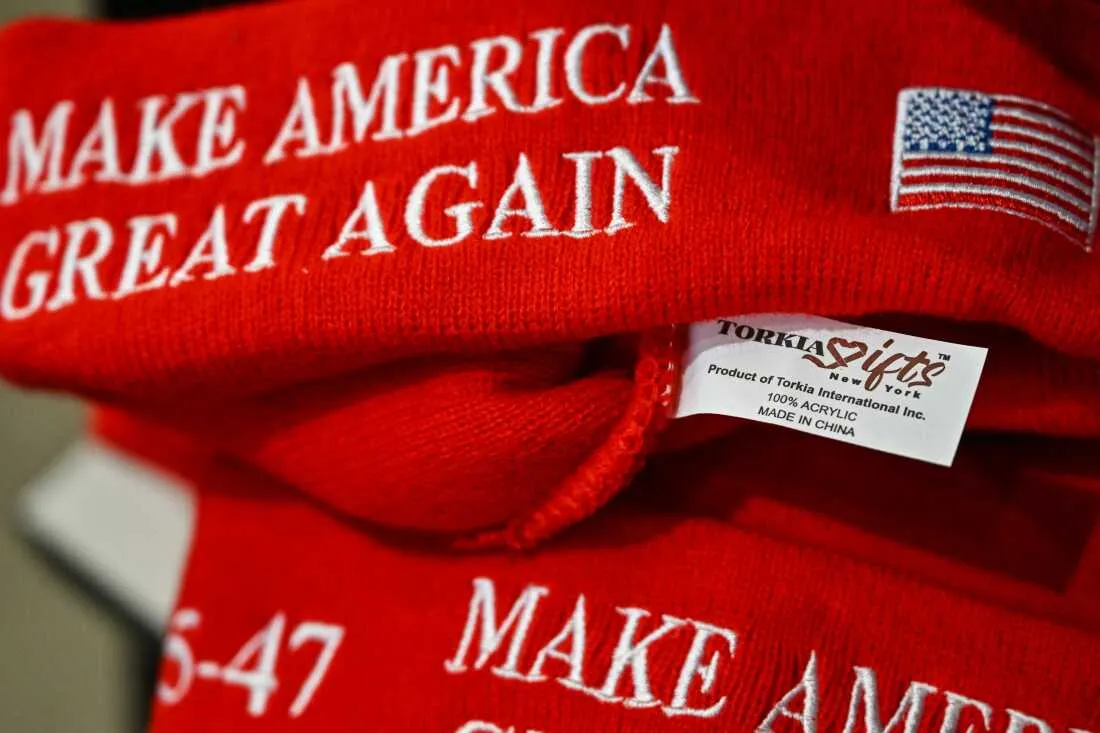The Surprising Truth Behind ‘Made in the USA’ Labels
In an era where the ‘Made in the USA’ label is often seen as a badge of honor, one Texas-based showerhead salesman embarked on an eye-opening journey to discover whether consumers truly value American-made products. This quest revealed some unexpected insights about customer preferences, pricing strategies, and the intricate realities of American manufacturing.
Meet the Salesman: A Passion for Quality
The businessman at the center of this exploration is Tom Henderson, owner of a small manufacturing company in Austin, Texas. Henderson believes strongly in the quality of American products and has dedicated his career to producing high-quality showerheads that reflect American ingenuity and craftsmanship.
Like many entrepreneurs, Henderson initially assumed that consumers would be willing to pay a premium for products that are proudly made in America. His experience in the industry led him to believe that customers recognized the value of supporting local businesses and ensuring that their dollars stayed within the American economy. With this mindset, he set out to test his hypothesis by conducting a series of market experiments.
Testing the Waters: Market Experimentation
To understand consumer attitudes towards the ‘Made in America’ label, Henderson developed a simple yet effective plan. He created two product lines: one that was manufactured in the United States and another that was imported from abroad. Both lines were designed with similar aesthetics and functionality, aiming to target the same market segment of eco-conscious and quality-focused consumers.
The first step in his experiment was to gather feedback from a focus group made up of loyal customers and potential buyers. Henderson presented both product lines without revealing their origins, allowing the participants to evaluate the products based on their design, usability, and price. The initial feedback was positive across the board, but the true questioning started when the label originated.
The Sobering Results: Consumer Reactions
As Henderson unveiled the origins of each product, the responses from the focus group diverged dramatically. When presented with the ‘Made in America’ label, most participants expressed enthusiasm and praised the quality they assumed came with domestic manufacturing. However, when the American-made version’s price was compared to its imported counterpart—often lower in price—reactions shifted.
Approximately 80% of the focus group members stated they would choose the cheaper, imported option even if it meant sacrificing what they initially perceived as superior American craftsmanship. The mood turned somber as Henderson realized that for many consumers, price outweighed patriotic sentiment.
Reassessing the Business Model: The Hard Truth
These findings prompted Henderson to reassess his business model and rethink his marketing strategies. He had long believed that the emotional appeal of supporting American manufacturing would translate into higher sales figures. However, the results from the focus group forced him to confront a sobering reality: in an age of economic uncertainty and global competition, consumers are often driven by one key factor—price.
This led him to investigate further the cost disparities between American-made products and those sourced from cheaper international labor. Henderson discovered that while manufacturing in the U.S. upheld superior quality and workplace standards, the financial implications of this choice were staggering. The labor costs, compliance with regulations, and the expense of sourcing raw materials domestically contributed to significantly higher production costs.
Consumer Awareness: A Double-Edged Sword
Despite the initial enthusiasm surrounding the ‘Made in America’ label, Henderson learned that many consumers are not fully aware of the implications behind their purchasing decisions. The allure of low prices has created a market filled with products labeled as “imported,” sometimes leading to a misconception of quality associated with American-made goods.
This realization led Henderson to work on a new strategy to educate his consumers through transparency. He aimed to make them aware not only of the benefits of purchasing American-made products but also the hidden costs associated with cheaper alternatives. By providing detailed insights into the production process, he hoped to build a more conscious consumer base willing to pay a fair price for quality goods.
Branding and Marketing: The New Approach
In light of his discoveries, he revamped his branding and marketing strategy. Instead of focusing solely on the ‘Made in the USA’ label, he concentrated on highlighting the craftsmanship, durability, and long-term benefits of his products. He used digital platforms to share stories behind the manufacturing process, showcasing the skilled laborers and artisans who contributed to each product.
Additionally, Henderson leveraged social media marketing campaigns to connect with younger consumers—a demographic that may have a stronger affinity for ethical consumerism and sustainable practices. By sharing videos and testimonials from workers in his factory and promoting the social responsibility angle of buying American-made products, he aimed to evoke an emotional response that transcended mere price comparison.
The Road Ahead: Balancing Price and Quality
Henderson’s journey into the world of ‘Made in the USA’ labels underscored the need for balance in the conversation about quality and affordability. While consumer sentiment is undoubtedly shifting towards ethical shopping, it still competes against the ingrained shopping habits developed over decades of globalization.
Ultimately, Henderson recognized that American manufacturers must focus on innovating and streamlining their production processes to remain competitive. This means investing in technology, refining supply chains, and constantly finding ways to bring costs down while maintaining the quality that consumers have come to expect from American-made products.
A Community Effort: The Future of American Manufacturing
In conclusion, Tom Henderson’s investigation into consumer perceptions of ‘Made in the USA’ has opened up an important dialogue about the future of American manufacturing. His findings highlight the complex relationship between pricing and consumer values, pointing to an urgent need for American businesses to adapt to changing market dynamics while continuing to uphold the principles of quality and integrity.
As more consumers become increasingly aware of the social and economic implications of their purchasing decisions, there is hope that a greater appreciation for effective local manufacturing will continue to grow. Henderson remains committed to this vision and encourages other businesses to engage in conversations about product origin, pricing, and the vital importance of investing in the American workforce.
The road ahead is undoubtedly challenging, but innovators like Henderson are at the forefront of crafting a future where American products hold their rightful place in the global market—one well-crafted showerhead at a time.







